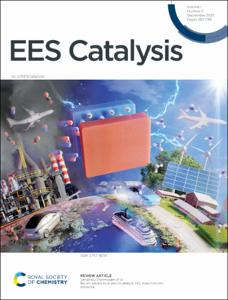Department of Energy Science and Engineering
Advanced Energy Materials Laboratory
1. Journal Articles
Full metadata record
| DC Field | Value | Language |
|---|---|---|
| dc.contributor.author | Inta, Harish Reddy | - |
| dc.contributor.author | Dhanabal, Dinesh | - |
| dc.contributor.author | Markandaraj, Sridhar Sethuram | - |
| dc.contributor.author | Shanmugam, Sangaraju | - |
| dc.date.accessioned | 2024-02-02T04:10:17Z | - |
| dc.date.available | 2024-02-02T04:10:17Z | - |
| dc.date.created | 2023-12-20 | - |
| dc.date.issued | 2023-06 | - |
| dc.identifier.issn | 2753-801X | - |
| dc.identifier.uri | http://hdl.handle.net/20.500.11750/47730 | - |
| dc.description.abstract | Ammonia (NH3) is an essential ingredient for the production of numerous chemicals which have a wider usage as fertilizers, explosives, and plastics. Currently, NH3 is mainly produced from the conventional Haber–Bosch process, which is energy-consuming and involves the risk of emitting greenhouse gases into the atmosphere. In contrast, electrochemical ammonia synthesis (EAS) from the nitrogen reduction reaction is evolving as a viable solution for sustainable NH3 production under ambient conditions. However, the high N[triple bond, length as m-dash]N dissociation energy and the competitive hydrogen evolution reaction result in an unsatisfactory ammonia yield rate and Faradaic efficiency. In this regard, EAS from reactive nitrogen (NOx) species, especially through the nitric oxide reduction reaction (NORR), could be a sustainable way as it produces valuable NH3 and simultaneously mitigates the gaseous NOx pollutant. Various NORR electrocatalysts have been designed and investigated. The electrocatalytic activity hugely depends on the composition, Gibbs free energy for ‘NO’ or intermediate adsorption on the catalyst surface, and the rate of proton/electron transfer at the solid–liquid–gas interface. Besides, different electrolyte additives have been employed to improve the solubility of NO in aqueous electrolytes. Thus, this review presents an overview of the NORR mechanism, recent advancements in electrocatalysts, and factors influencing the NH3 yield and selectivity. After that, the forthcoming challenges associated with practical realisation of EAS via NORR are discussed. © 2023 The Royal Society of Chemistry This article is licensed under a Creative Commons Attribution-NonCommercial 3.0 Unported Licence. | - |
| dc.language | English | - |
| dc.publisher | Royal Society of Chemistry | - |
| dc.title | Recent advances in electrocatalytic NOx reduction into ammonia | - |
| dc.type | Article | - |
| dc.identifier.doi | 10.1039/d3ey00090g | - |
| dc.identifier.bibliographicCitation | EES Catalysis, v.1, no.5, pp.645 - 664 | - |
| dc.description.isOpenAccess | TRUE | - |
| dc.citation.endPage | 664 | - |
| dc.citation.number | 5 | - |
| dc.citation.startPage | 645 | - |
| dc.citation.title | EES Catalysis | - |
| dc.citation.volume | 1 | - |
| dc.description.journalRegisteredClass | foreign | - |
| dc.type.docType | Review | - |
- Files in This Item:
-

Recent advances in electrocatalytic NOx reduction into ammonia.pdf
기타 데이터 / 6.56 MB / Adobe PDF download
- Appears in Collections:
- Department of Energy Science and Engineering Advanced Energy Materials Laboratory 1. Journal Articles



